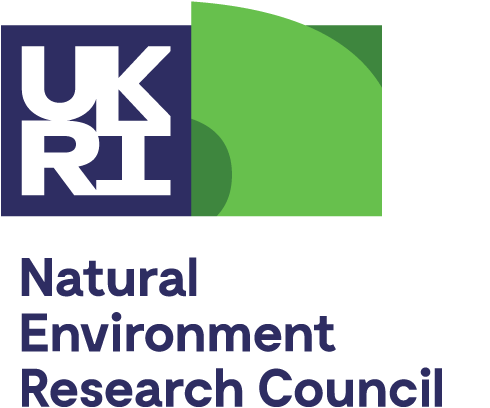SoS RARE collaboration with CREEN at RFG 2018, June 2018
SoS RARE played an important role in the Resources for Future Generations conference (RFG2018) in Vancouver, Canada, 16-21 June 2018. The session on Energy and Technology Metals, MIN37, convened by CREEN (Canadian Rare Earth Element Network) and SoS RARE, attracted over 40 contributions lasting two days of the conference and ended with a 90 minute panel discussion on the Thursday afternoon.
Rapid growth in advanced technologies, especially in clean energy and transport, depends on a suite of minor raw materials, many of which are only mined in small quantities and come from just a few sources. As use of clean technologies increases, so does the need for these critical raw materials. The session heard a range of excellent presentations on geology and process mineralogy and recycling of a range of materials, from REE to lithium, germanium, tellurium and gallium. Rod Eggert of the Colorado School of Mines gave a keynote on "Perspectives on critical elements for energy technologies". SoS RARE was very well represented in the session: Eva Marquis and Anouk Borst talked about their work on the ion adsorption REE deposits in Madagascar, Frances Wall and Rob Pell presented on responsible sourcing and life cycle assessments, and Kathryn Goodenough gave a talk for Megan Barnett and Barbara Palumbo-Roe on bioleaching of REE. SoS RARE partner Anthony 'Willy' Williams-Jones presented work on scandium ore genesis. Additionally, Kathryn Goodenough gave a talk in a keynote session which also included SoS RARE work. The greatest number of presentations in our session were on the topics of REE and lithium and therefore the panel discussion concentrated on these two topics. The topic we chose for the panel discussion was:
What Are the Priority Actions Now in Order to Provide Secure and Responsibly Sourced Energy and Technology Metals for Future Generations?
Greg Andrews, Director, President and CEO at Search Minerals Inc., Canada chaired the panel and Bill Mercer (Avalon Advanced Materials Inc), Sarah Gordon (Secretary Foreign & External Affairs, Geological Society and Satarla), Michael Parsons (Geological Survey of Canada), Rob Pell (Camborne School of Mines, University of Exeter), Damien Giurco (Institute for Sustainable Futures, UTS), and Dieuwertje Schrijvers (University of Bordeaux) were our panel members. An audience of about 30 joined in the discussions. After discussing the main issues in supply of raw materials of rare earths and lithium, participants made a table of actions, (rapporteur: Frances Wall, Camborne School of Mines) for each of lithium and rare earths. Once the table was populated (see below), we spent the final minutes considering which actions might be the priority, and these are highlighted in bold text. See if you agree with the list or can see additions or alternatives that might be considered.
Themes that I would particularly pick out from the discussion, are the call for direct financial intervention to get new projects up and running, and the need to share information between projects, including - perhaps difficult but important- to share information with Chinese operators. There could be a two way win here, if China needs to improve its environmental reputation and operators outside China need processing expertise. The industry is already working with China, in that rare earths from most mines, including Mountain Pass, are being sold to, or toll processed in, China. Other priorities included better information sharing and the need for more research on environmental aspects in order to inform regulators. There were more actions suggested for the REE in the table below than for lithium and this may well reflect the more challenging technical and market environment for REE.
We welcome feedback.
Frances Wall, June 2018
Table of actions
| REE | Lithium |
|---|---|
Consistent government strategy and involvement, including continued support for current projects |
Consistent government strategy and involvement |
Government support for R&I |
Government support for R&I |
Government financial support for industry to develop projects |
Support for industry to develop projects (less of a problem for Li projects than REE which has greater technical challenges) |
Attract additional private industry support to develop projects |
Attract additional private industry support to develop projects |
Emphasize more the connections with EVs and renewable technologies (in REE permanent magnets) because this is less well understood by governments than the need for Li. |
The need for Li in order to manufacture batteries has helped development of new deposits. |
Create an International trade organisation to link producers, processors and users (noted, there is an EIT initiative to make a rare earths association http://kuleuven.sim2.be/new-association-global-ree-industry/ |
Larger pilot plants with ?government funding – to show customer what can be provided (Check H2020 calls for 2019, at least one concerns pilot plants) |
Innovative methods for REE separation outside of China |
|
Find ways to share information on technologies that exist |
|
Education and dialogue with public / regulators (need competent persons), manufacturers. E.g. USGS website (INTRAW – USGS webinar) |
|
Make offtake agreements between producers and partners outside China in order to give diversity of supply. |
|
Find ways to give mines/refineries outside China the ability to charge a price premium. (e.g. responsible sourcing scheme) |
|
Learn from China about production, refining and manufacturing using REE |
|
Better understanding of environmental issues / behaviour of unusual deposits and data sharing |
Li hard rock less challenging (less waste because of potential co-products such as feldspar). Brines and especially clays are less well known |
Waste less and recycle more in industrial use |
Waste less and recycle more in industrial use (e.g. growth of Li batteries waste in Australia) |
Better understanding of deposits |
Better understanding of deposits, especially brines |
Understand Th232 radioactivity issue and better ways to handle during the processing and refining of REE |
|
Consider by-products (from phosphorite, iron ore, bauxite, coal) - realistic sources if techno-economic problems can be overcome |
Work to bring Li by-products to market – e.g. Li from oilfield and geothermal brines |
Persuade clients to take more account of environmental and social factors so that there is a premium price for responsibly sourced raw materials |
Persuade clients to take more account of environmental and social factors so that there is a premium price for responsibly sourced raw materials |
Better understanding of industry needs for each individual REE and how to balance production to meet demand |
|
Find ways to shorten timeline to production |
Find ways to shorten timeline to production |
Improve communications along the value chain. Go to conferences that join up the value chain e.g. f elements http://icfe10.epfl.ch/ |
Improve communications along the value chain |








